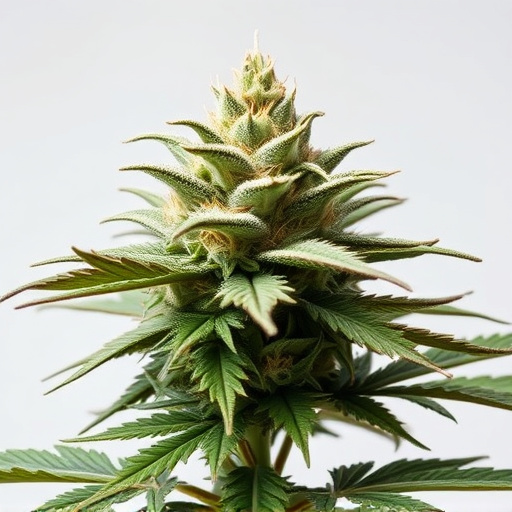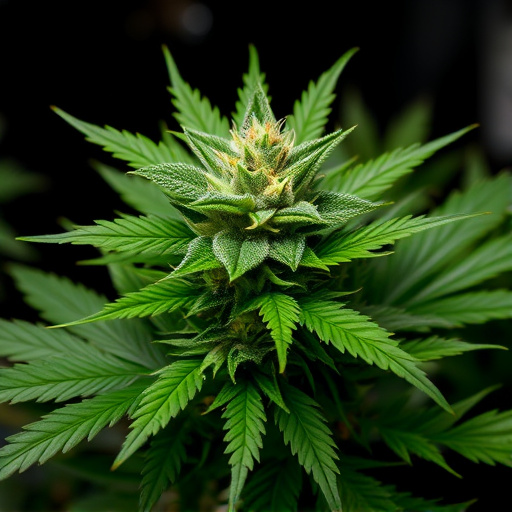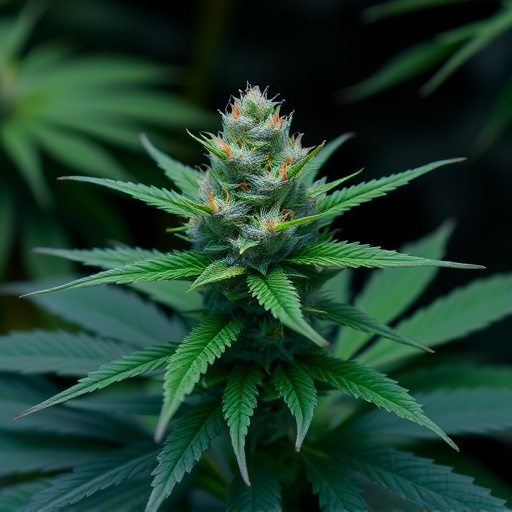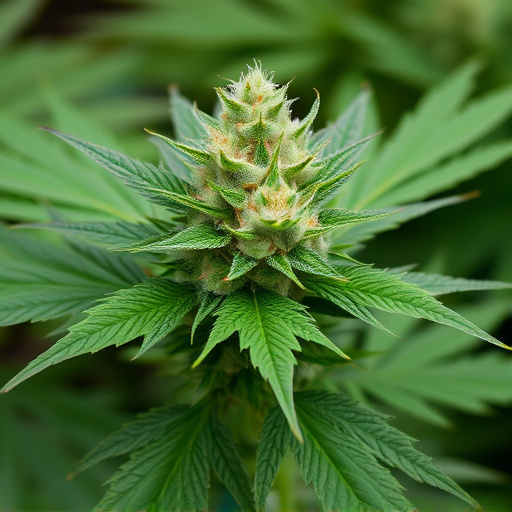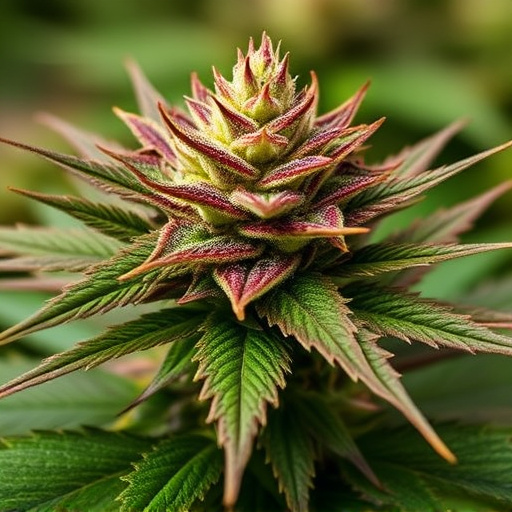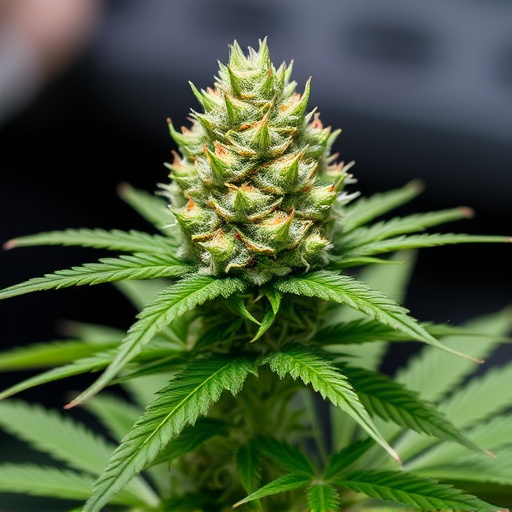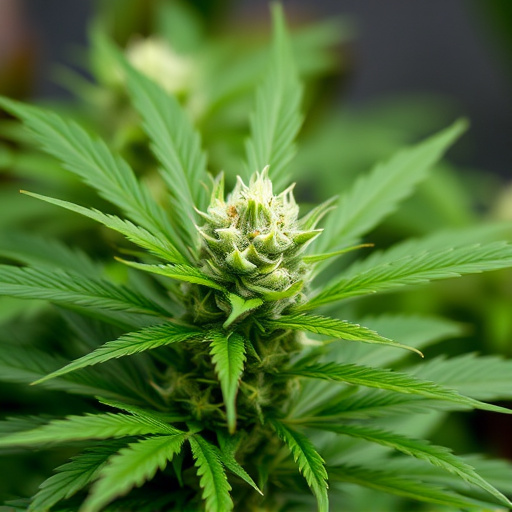THC, found in best medical cannabis strains, interacts with the body's endocannabinoid system (ECS) influencing appetite, pain, mood and memory. This effect on hunger hormones causes increased appetite as a side effect. Medical cannabis shows potential therapeutic benefits for conditions like anorexia and cachexia. Strains with higher THC content stimulate hunger while balanced ratios with CBD prevent overeating. Types like Blue Dream, Girl Scout Cookies, and Pineapple Express promote eating, while Northern Lights and White Widow reduce nausea and stress, aiding appetite regulation.
“Unraveling the impact of THC on hunger hormones is a fascinating journey into the intricate world of the endocannabinoid system. This compound, found in cannabis, has shown promising effects in modulating appetite, offering potential relief for those struggling with eating disorders.
In this article, we explore the science behind THC’s interaction with our bodies, its role in regulating hunger, and how specific medical cannabis strains can be tailored to manage appetitive challenges. Discover the game-changing potential of these natural remedies.”
- Understanding THC and Its Interaction with the Endocannabinoid System
- The Role of THC in Modulating Hunger and Appetite
- Best Medical Cannabis Strains for Managing Hunger and Appetite Disorders
Understanding THC and Its Interaction with the Endocannabinoid System
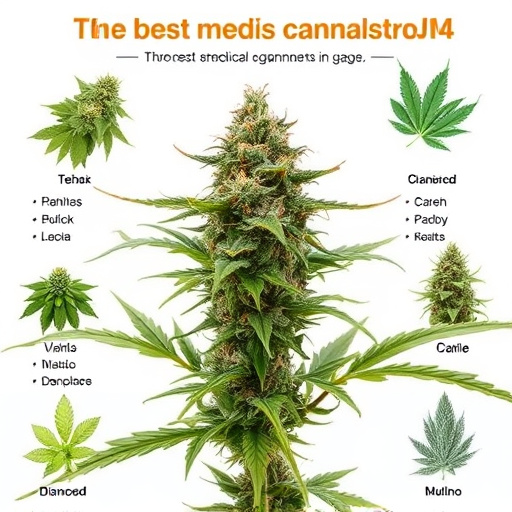
THC, or tetrahydrocannabinol, is a key compound found in the best medical cannabis strains, known for its psychoactive effects. However, its influence extends far beyond just inducing feelings of euphoria. THC interacts with the endocannabinoid system (ECS), a complex network of receptors and enzymes present throughout the body that plays a crucial role in maintaining homeostasis—the internal balance necessary for optimal health.
The ECS is involved in various physiological processes, including appetite regulation, pain perception, mood, and memory. When THC binds to specific receptors within the ECS, particularly CB1 and CB2 receptors, it can modulate these processes. For instance, THC’s impact on hunger hormones is well-documented, leading to increased appetite, a common side effect associated with cannabis use. Understanding these interactions offers insights into both the potential therapeutic benefits of medical cannabis for conditions like anorexia or cachexia as well as the need for responsible consumption and dosage management.
The Role of THC in Modulating Hunger and Appetite
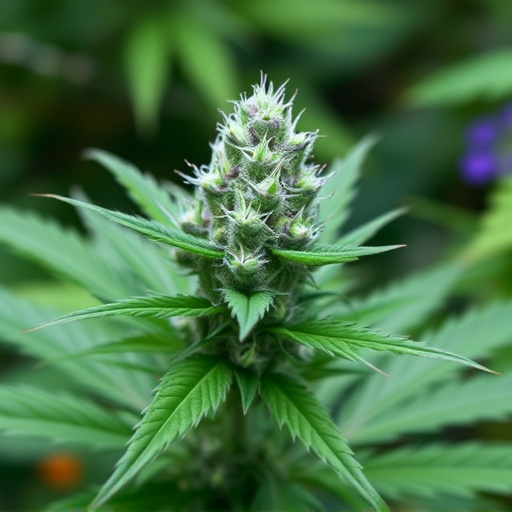
THC, or tetrahydrocannabinol, plays a significant role in modulating hunger and appetite, making it an essential compound to consider when exploring the effects of medical cannabis on eating behaviors. Studies have shown that THC can stimulate the release of hormones such as ghrelin, often referred to as the “hunger hormone,” which promotes feelings of hunger and increases food intake. This effect is particularly notable in individuals with certain medical conditions, like cachexia or anorexia nervosa, where enhancing appetite is a primary goal for treatment.
The interaction between THC and specific receptors in the brain’s endocannabinoid system can lead to complex changes in eating patterns. While THC may stimulate hunger, different strains of medical cannabis, known for their unique THC-to-CBD ratios, offer tailored approaches to managing appetite. For instance, best medical cannabis strains with higher CBD content are often sought for their ability to provide a more balanced effect, potentially reducing overeating while still offering appetite stimulation when needed, making them valuable tools in various therapeutic regimens.
Best Medical Cannabis Strains for Managing Hunger and Appetite Disorders
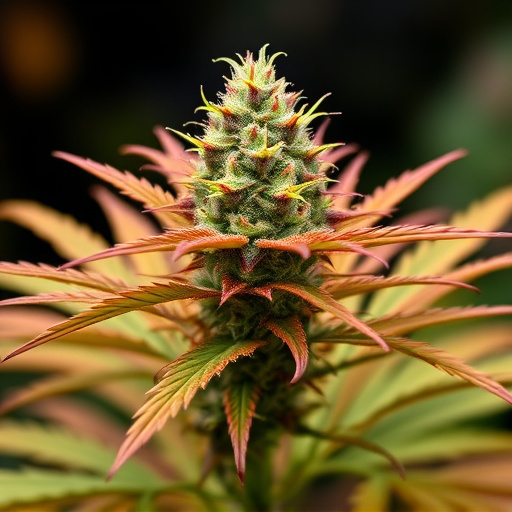
When it comes to managing hunger and appetite disorders, certain medical cannabis strains have proven to be particularly effective due to their unique chemical compositions. These best medical cannabis strains contain specific levels of THC (tetrahydrocannabinol) and other cannabinoids that interact with the body’s endocannabinoid system to regulate appetite. For patients struggling with conditions like anorexia nervosa or chronic weight loss, these strains can provide much-needed relief by stimulating hunger and increasing food intake.
Among the best medical cannabis strains for managing hunger are those with higher THC content, such as Blue Dream, Girl Scout Cookies, and Pineapple Express. These strains not only induce a feeling of hunger but also offer other therapeutic benefits like reducing nausea and stress, common side effects experienced by patients undergoing treatment for appetite disorders. Additionally, some strains like Northern Lights and White Widow are known for their relaxing properties, which can help alleviate anxiety and promote better sleep—essential factors in maintaining a healthy appetite.
THC’s impact on hunger hormones, as facilitated by its interaction with the endocannabinoid system, presents a promising avenue for managing appetite disorders. Understanding this relationship has led to the identification of specific medical cannabis strains that can effectively alleviate hunger-related symptoms. Exploring these best medical cannabis strains offers hope for those struggling with eating disorders and weight gain, providing a natural alternative for improving overall well-being.

